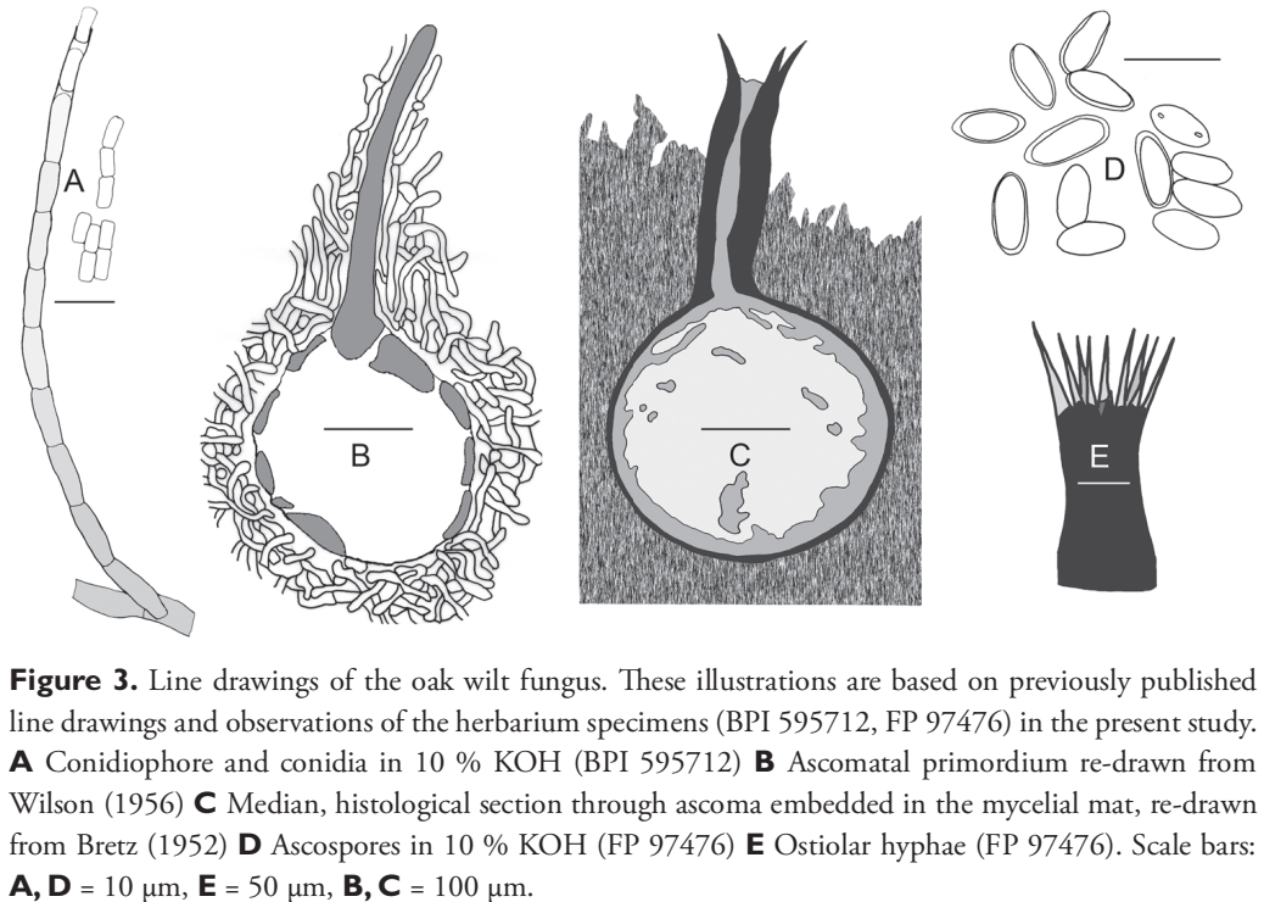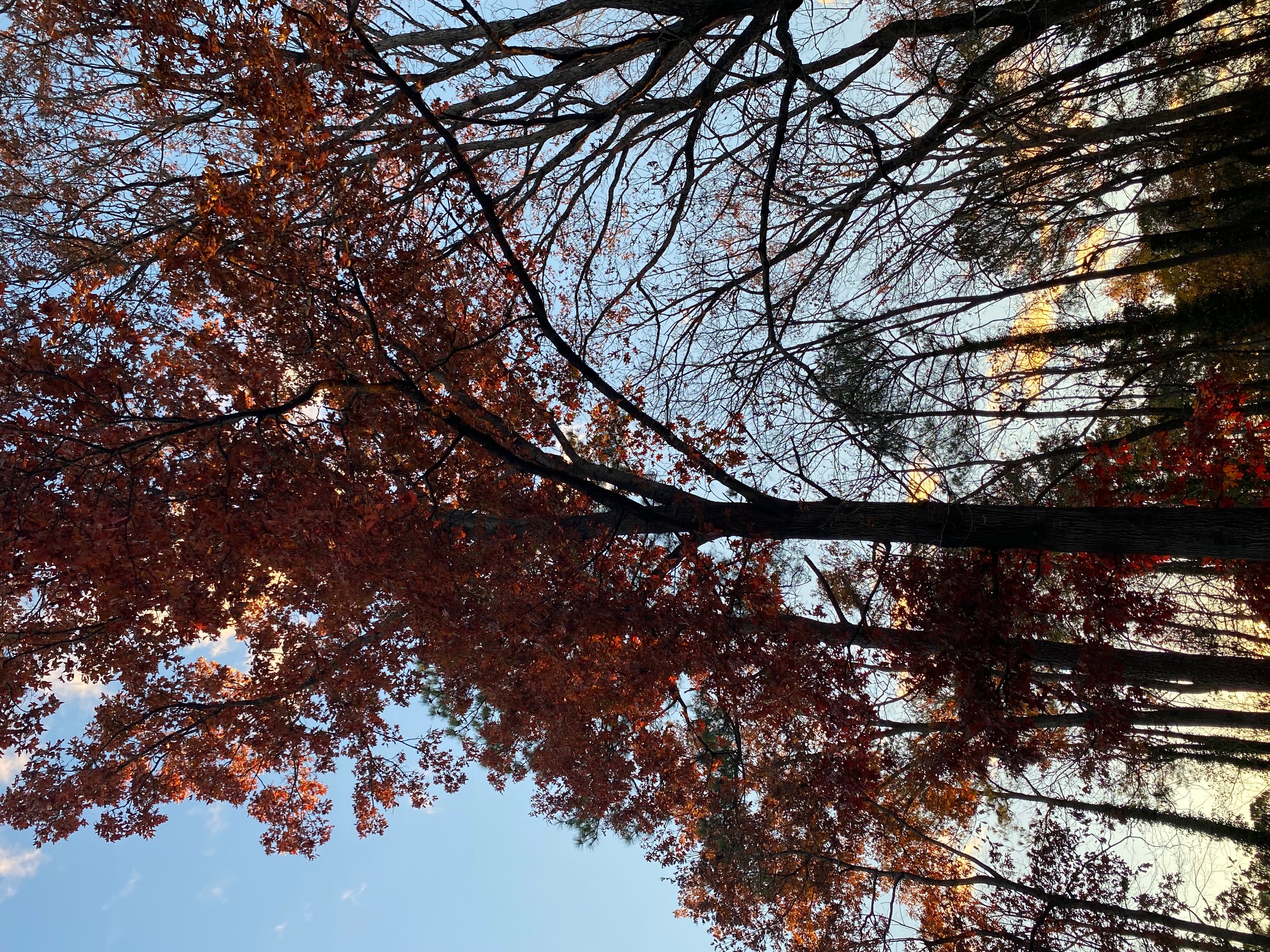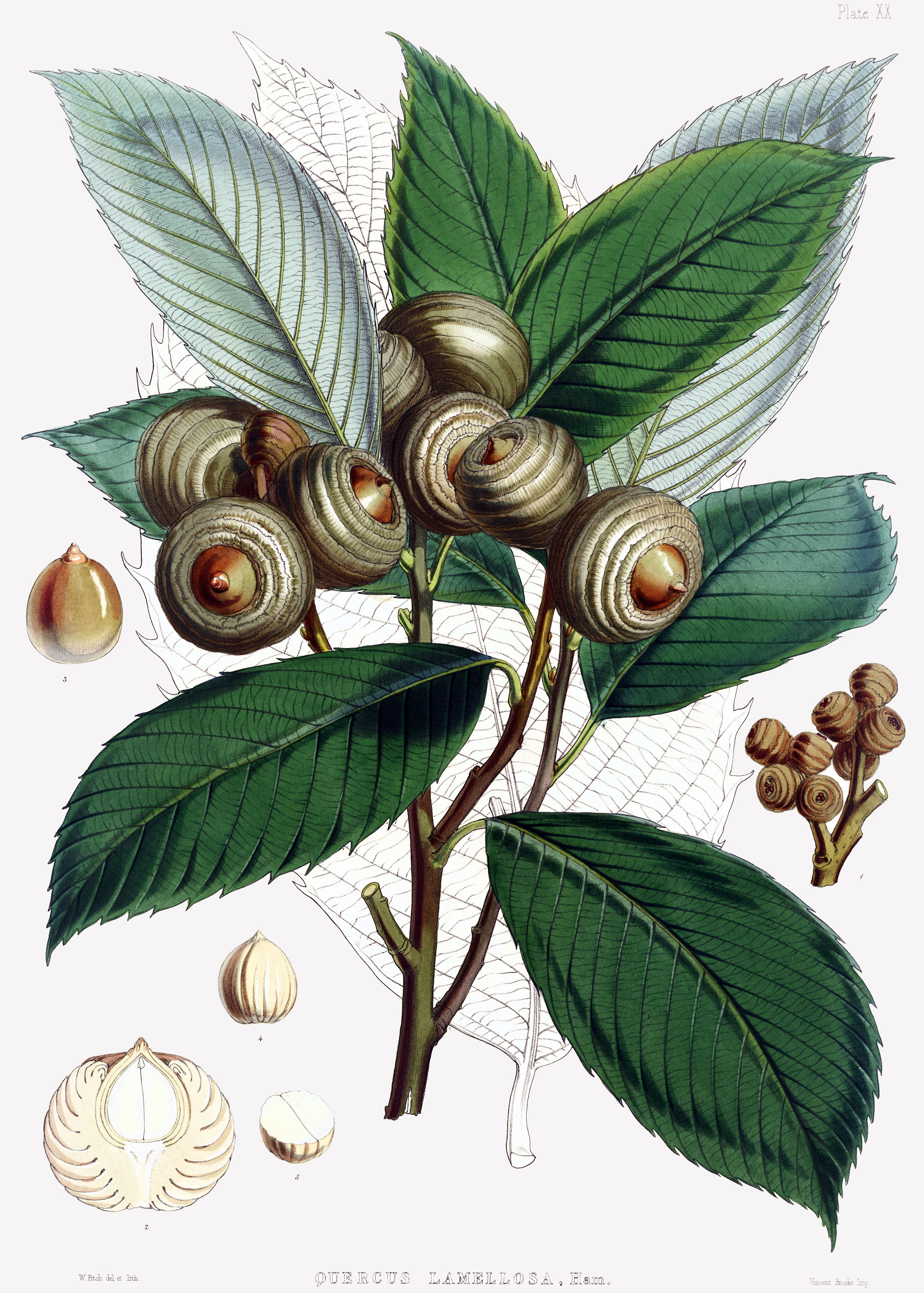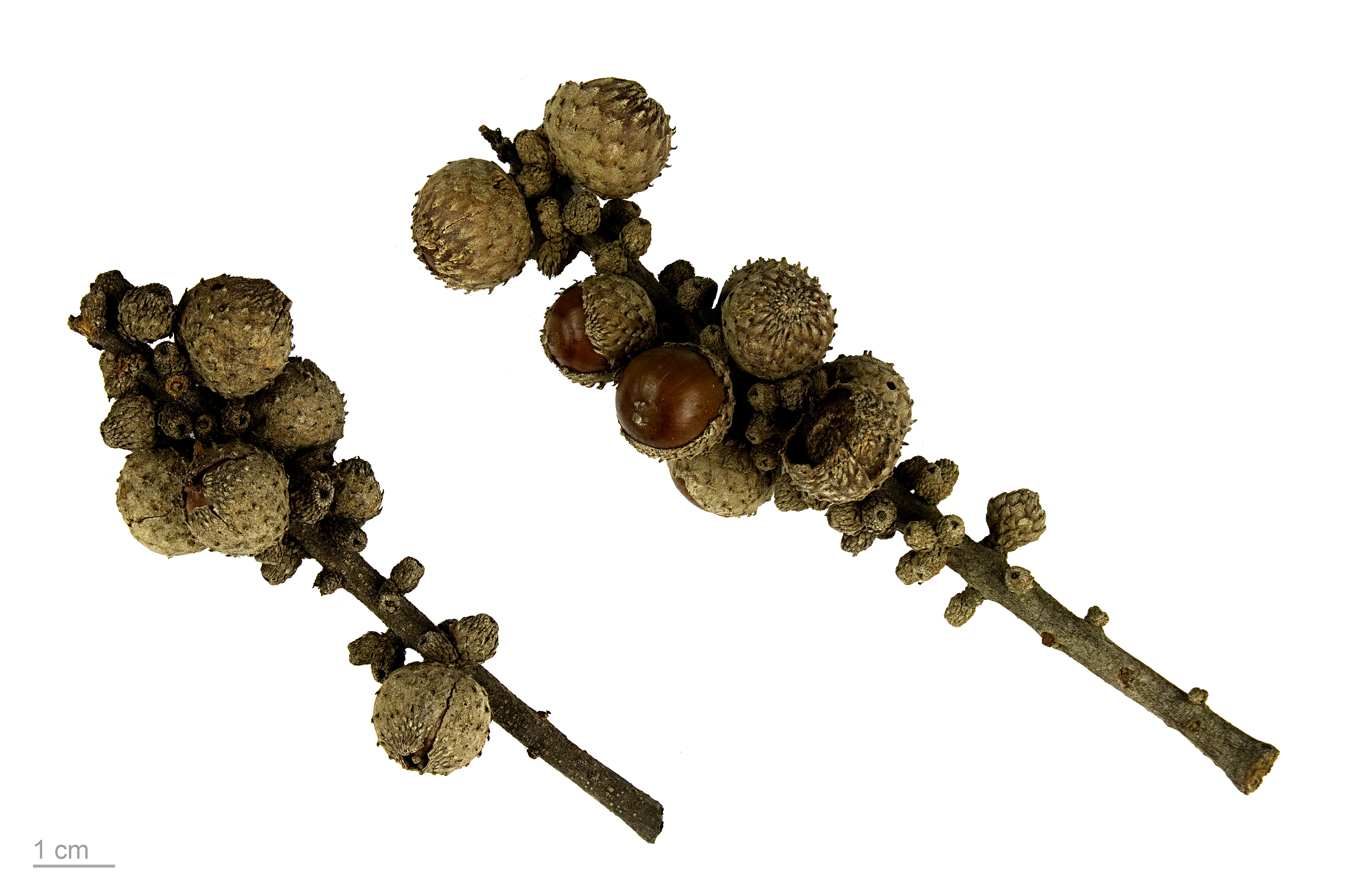|
Oak Wilt
Oak wilt is a fungal disease caused by the organism ''Bretziella fagacearum'' that threatens ''Quercus'' spp. The disease is limited to the eastern half of the United States, Central Texas, and Southern Ontario. First described in the 1940s in the Upper Mississippi River Valley. The pathogen penetrates xylem tissue, preventing water transport and causing disease symptoms. Symptoms generally consist of leaf discoloration, wilt, defoliation, and death. The disease is dispersed by insect vectors and to adjacent trees through underground root networks. However, human spread is the most consequential dispersal method. Moving firewood long distances can potentially transport diseases and invasive species. Disease Oak wilt is a devastating exotic disease, killing some trees rapidly in a single season. Oak wilt is an important disease in urban areas where trees are highly valued. The disease reduces property values because of the loss of trees and is economically costly to the ... [...More Info...] [...Related Items...] OR: [Wikipedia] [Google] [Baidu] |
Nitidulidae
The sap beetles, also known as Nitidulidae, are a family of beetles. They are small (2–6 mm) ovoid, usually dull-coloured beetles, with knobbed antennae. Some have red or yellow spots or bands. They feed mainly on decaying vegetable matter, over-ripe fruit, and sap. Some sap beetle species coexist with fungi species and live in habitats of coniferous trees. These fungi-dependent beetles are found in all across Europe and Siberia and are the biggest nutudulid species known in those areas. Other species like the Australian ''Chychramptodes murrayi'' are known to feed on scale insects. There are a few pest species, like the strawberry sap beetle that infest crops in Brazil between the months of August and February. Some common sap beetles include: * the picnic beetle, ''Glischrochilus quadrisignatus'' * the dusky sap beetle, ''Carpophilus lugubris'' * the strawberry sap beetle, ''Stelidota geminata'' * the small hive beetle, ''Aethina tumida'' The oldest unambiguou ... [...More Info...] [...Related Items...] OR: [Wikipedia] [Google] [Baidu] |
Lumber
Lumber is wood that has been processed into uniform and useful sizes (dimensional lumber), including beams and planks or boards. Lumber is mainly used for construction framing, as well as finishing (floors, wall panels, window frames). Lumber has many uses beyond home building. Lumber is referred to as timber in the United Kingdom, Australia, and New Zealand, while in other parts of the world, including the United States and Canada, the term ''timber'' refers specifically to unprocessed wood fiber, such as cut logs or standing trees that have yet to be cut. Lumber may be supplied either rough- sawn, or surfaced on one or more of its faces. ''Rough lumber'' is the raw material for furniture-making, and manufacture of other items requiring cutting and shaping. It is available in many species, including hardwoods and softwoods, such as white pine and red pine, because of their low cost. ''Finished lumber'' is supplied in standard sizes, mostly for the construction ind ... [...More Info...] [...Related Items...] OR: [Wikipedia] [Google] [Baidu] |
Quercus Coccinea
''Quercus coccinea'', the scarlet oak, is a deciduous tree in the red oak section ''Lobatae'' of the genus ''Quercus'', in the family Fagaceae. It is primarily distributed in the central and eastern United States. It occurs on dry, sandy, usually acidic soil. It is often an important canopy species in oak–heath forests. The scarlet oak is the official tree of Washington, D.C. Description ''Quercus coccinea'' is a medium to large deciduous tree growing to around with an open, rounded crown; the maximum height is approximately . The trunk diameter at breast height is typically It is a medium-size tree that grows fast and matures relatively early. It sets a deep growing taproot. The leaves are glossy green, long and broad, with seven lobes, and deep sinuses between the lobes. Each lobe has 3–7 bristle-tipped teeth. The leaf is hairless (unlike the related pin oak (''Q. palustris''), with tufts of pale orange-brown down where the lobe veins join the central vein). Th ... [...More Info...] [...Related Items...] OR: [Wikipedia] [Google] [Baidu] |
Quercus Ellipsoidalis
''Quercus ellipsoidalis'', the northern pin oak or Hill's oak, is a North American species of oak tree native to the north-central United States and south-central Canada, primarily in the Great Lakes region and the Upper Mississippi Valley. It most commonly occurs on dry, sandy soils. Description ''Quercus ellipsoidalis'' is a medium-sized deciduous tree growing to tall with an open, rounded crown. The leaves are glossy green, long and broad, lobed, with five or seven lobes, and deep sinuses between the lobes. Each lobe has 3–7 bristle-tipped teeth. The leaf is nearly hairless, except for small tufts of pale orange-brown down where the lobe veins join the central vein. The acorns tend to be ellipsoid (ellipse-shaped, from which its scientific name derives), though they tend to be highly variable and range to globose, long and broad, a third to a half covered in a deep cup, green maturing pale brown about 18 months after pollination; the kernel is very bitter. The inner s ... [...More Info...] [...Related Items...] OR: [Wikipedia] [Google] [Baidu] |
Quercus Rubra
''Quercus rubra'', the northern red oak, is an oak tree in the red oak group (''Quercus'' section ''Lobatae''). It is a native of North America, in the eastern and central United States and southeast and south-central Canada. It has been introduced to small areas in Western Europe, where it can frequently be seen cultivated in gardens and parks. It prefers good soil that is slightly acidic. Often simply called red oak, northern red oak is so named to distinguish it from southern red oak (''Q. falcata''), also known as the Spanish oak. Northern red oak is sometimes called champion oak. Description In many forests, ''Quercus rubra'' grows straight and tall, to , exceptionally to tall, with a trunk of up to in diameter. Open-grown trees do not get as tall, but can develop a stouter trunk, up to in diameter. It has stout branches growing at right angles to the stem, forming a narrow round-topped head. Under optimal conditions and full sun, northern red oak is fast growing ... [...More Info...] [...Related Items...] OR: [Wikipedia] [Google] [Baidu] |
Quercus Velutina
''Quercus velutina'' (Latin 'velutina', "velvety") , the black oak, is a species of oak in the red oak group (''Quercus'' sect. ''Lobatae''), native and widespread in eastern and central North America. It is sometimes called the eastern black oak. ''Quercus velutina'' was previously known as yellow oak due to the yellow pigment in its inner bark. It is a close relative of the California black oak (''Quercus kelloggii'') found in western North America. Description In the northern part of its range, ''Quercus velutina'' is a relatively small tree, reaching a height of and a diameter of , but it grows larger in the south and center of its range, where heights of up to are known. The leaves of the black oak are alternately arranged on the twig and are long with 5–7 bristle-tipped lobes separated by deep U-shaped notches. The upper surface of the leaf is a shiny deep green, and the lower is yellowish-brown. There are also stellate hairs on the underside of the leaf that grow in ... [...More Info...] [...Related Items...] OR: [Wikipedia] [Google] [Baidu] |
Mortality Rate
Mortality rate, or death rate, is a measure of the number of deaths (in general, or due to a specific cause) in a particular Statistical population, population, scaled to the size of that population, per unit of time. Mortality rate is typically expressed in units of deaths per 1,000 individuals per year; thus, a mortality rate of 9.5 (out of 1,000) in a population of 1,000 would mean 9.5 deaths per year in that entire population, or 0.95% out of the total. It is distinct from "morbidity", which is either the prevalence or Incidence (epidemiology), incidence of a disease, and also from the incidence rate (the number of newly appearing cases of the disease per unit of time). An important specific mortality rate measure is the crude death rate, which looks at mortality from all causes in a given time interval for a given population. , for instance, the Central Intelligence Agency, CIA estimates that the crude death rate globally will be 7.7 deaths per 1,000 people in a population p ... [...More Info...] [...Related Items...] OR: [Wikipedia] [Google] [Baidu] |
List Of Quercus Species
The genus ''Quercus'' contains about 500 known species, plus about 180 hybrids between them. The genus, as is the case with many large genera, is divided into subgenera and sections. Traditionally, the genus ''Quercus'' was divided into the two subgenera ''Cyclobalanopsis'', the ring-cupped oaks, and ''Quercus'', which included all the other sections. However, a comprehensive revision in 2017 identified different relationships. Now the genus is commonly divided into a subgenus ''Quercus'' and a subgenus ''Cerris'', with ''Cyclobalanopsis'' included in the latter. The sections of subgenus ''Quercus'' are mostly native to the New World, with the notable exception of the white oaks of sect. ''Quercus'' and the endemic '' Quercus pontica''. In contrast, the sections of the subgenus ''Cerris'' are exclusively native to the Old World. Unless otherwise indicated, the lists which follow contain all the species accepted by Plants of the World Online , plus selected hybrids that are also ... [...More Info...] [...Related Items...] OR: [Wikipedia] [Google] [Baidu] |
Quercus Robur
''Quercus robur'', the pedunculate oak, is a species of flowering plant in the beech and oak family, Fagaceae. It is a large tree, native plant, native to most of Europe and western Asia, and is widely cultivated in other temperate regions. It grows on soils of near neutral Soil pH, acidity in the lowlands and is notable for its value to natural ecosystems, supporting a very wide diversity of herbivorous insects and other pests, predators and pathogens. Description Pedunculate oak is a deciduous tree up to tall, with a single stout trunk that can be as much as in girth (circumference at breast height) or even 14 m in Pollarding, pollarded specimens. Older trees tend to be pollarded, with boles (the main trunk) about 3 m long. They often live longer and become more stout than unpollarded trees. The crown is spreading and unevenly domed, and trees often have massive lower branches. The bark is greyish-brown and closely grooved, with vertical plates. There are often large burrs ... [...More Info...] [...Related Items...] OR: [Wikipedia] [Google] [Baidu] |
Quercus Pubescens
''Quercus pubescens'' (Synonym (taxonomy), synonyms ''virgiliana''), commonly known as the downy oak, pubescent oak or Italian oak, is a species of white oak (genus ''Quercus'' sect. ''Quercus'') native to southern Europe and southwest Asia. It is found from northern Spain (Pyrenees) and France in the West to Turkey and the Caucasus in the East. Description ''Quercus pubescens'' is a medium-sized deciduous tree growing up to . Forest-grown trees grow tall, while open-growing trees develop a very broad and irregular crown. They are long-lived, to several hundred years, and eventually grow into very stout trees with trunks up to in diameter. Open-grown trees frequently develop several trunks. The Bark (botany), bark is very rough, light gray and divided into small flakes. Large trees develop very thick whitish bark cracked into deep furrows, similar to the pedunculate oak but lighter in colour. The twigs are light purple or whitish, with tomentum. The buds are small () and blu ... [...More Info...] [...Related Items...] OR: [Wikipedia] [Google] [Baidu] |
Quercus Petraea
''Quercus petraea'', commonly known as the sessile oak, Welsh oak, Cornish oak, Irish oak or durmast oak, is a species of oak tree native to most of Europe and into Anatolia and Iran. The sessile oak is the national tree of Ireland, and an unofficial emblem in Wales and Cornwall. Description The sessile oak is a large deciduous tree up to tall, in the white oak section of the genus (''Quercus'' sect. ''Quercus'') and similar to the pedunculate oak (''Q. robur''), with which it overlaps extensively in range. The leaves are long and broad, evenly lobed with five to six lobes on each side and a petiole. The male flowers are grouped into catkins, produced in the spring. The fruit is an acorn long and broad, which matures in about six months. File:Divljanski stari hrast.jpg, Old sacred oak ( zapis) in Divljana, Serbia File:Quercus petraea 02.jpg, Shoot with leaves and acorn File:Eglinton fish pond island inosculated Q. petraea.JPG, An inosculated tree File:Sessile O ... [...More Info...] [...Related Items...] OR: [Wikipedia] [Google] [Baidu] |
Lithocarpus
''Lithocarpus'' is a genus in the beech family, Fagaceae. Trees in this genus are commonly known as the stone oaks and differ from ''Quercus'' primarily because they produce insect-pollinated flowers on erect spikes and the female flowers have short styles with punctate stigmas. At current, around 340 species have been described, mostly restricted to Southeast Asia. Fossils show that ''Lithocarpus'' formerly had a wider distribution, being found in North America and Europe during the Eocene to Miocene epochs. The species extend from the foothills of the Hengduan Mountains, where they form dominant stands of trees, through Indochina and the Malayan Archipelago, crossing Wallace's Line and reaching Papua. In general, these trees are most dominant in the uplands (more than above sea level) and have many ecological similarities to the Dipterocarpaceae, the dominant lowland tree group. These trees are intolerant of seasonal droughts, not being found on the Lesser Sunda Islands, ... [...More Info...] [...Related Items...] OR: [Wikipedia] [Google] [Baidu] |







